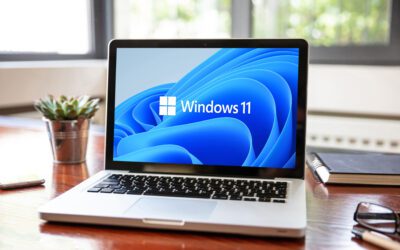
Have you ever wondered what happens to your old computer when IT rolls in and replaces it with a new one? What about when the upgrade is floor-wide or even office-wide? It’s easy to get excited about new technology, and as processors and storage get more powerful, we are pressured to leave behind old devices at an increasing rate. So, what’s happening to all that outdated technology? Unfortunately, our solutions for handling old devices haven’t kept up with the development of new ones.
The e-waste problem
The term “e-waste” is an informal way of referring to electronic trash. Old computers, monitors, smartphones and even microwaves and refrigerators can all be considered prime e-waste material. E-waste differs from other types of trash in that it consistently contains lead, mercury and other heavy metals, as well as other forms of difficult-to-dispose-of materials such as glass. Most e-waste ends up being shipped out to developing countries, where it accumulates with dangerous consequences. Common e-waste disposal methods include burning and shredding, which are both processes that come with the risk of releasing toxins into the air and contaminating the water supply.
It’s important to recognize that as technology becomes more abundant and obtainable, the e-waste problem is getting larger. What’s more, we’re not doing our part to manage the issue, as 2012 and 2014 estimates both concluded that only 15% to 20% of e-waste goes through a recycling process, while the remaining 80% to 85% gets unceremoniously dumped or incinerated.
What to do about e-waste
So, what can we do to change this? The first step involves raising awareness—and you’re already reading this blog post, so good for you! Another positive step is to find new homes for your unwanted devices. If they’re old but not broken, consider gifting them to friends and family or donating them to a good cause. Although this will help keep your devices out of the trash for a while longer, it’s important to make sure the people getting them understand the importance of properly managing e-waste as well!
To that end, why not consider going directly through your devices’ manufacturers? Most major hardware manufacturers have one or more recycling/donation programs set up to specifically combat the issue of e-waste. For example, Apple will recycle almost all of its devices (and will even exchange them for gift cards in certain cases), while Dell and HP both recycle ink and toner, as well as maintain free drop-off locations for unwanted hardware. HP also accepts any brand of cellphone, along with smartphone and laptop batteries. And if you have one, a managed service provider might also be able to offer advice on recycling electronics. Here at MyITpros, we have an established policy for helping clients with their e-waste.
You may be surprised to discover that when saying goodbye to your old technology, there are myriad options that don’t involve throwing your e-waste in the nearest dumpster! A lot of hard work has gone into trying to make recycling as easy and impactful as possible, and at this point, there’s only one thing missing to make it all worthwhile—your trash!




